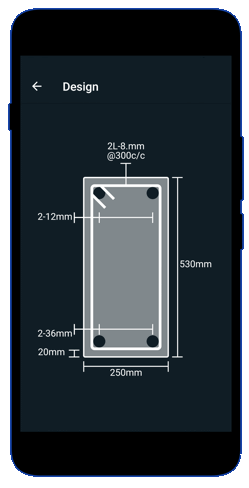Beam is one of the integral part of any structure. It is very important to check the safety of beam not only before construction but even after the construction stage. We ensure the safety of beam in the design phase by considering all the codal provisions. IS 456 : 2000 is the Indian standard code we use for designing the reinforced concrete structures.
To avoid the failure of reinforced concrete beam we need to carefully design and test the beam prior to construction. The area of reinforcement and section of beam should be designed keeping in mind the following criteria:
Limit state of collapse:
It deals with strength and stability of the structure, under the maximum design load.
Limit state of serviceability:
It deals with the deflection and cracking of the structure to be in serviceable condition.
One should consider all the different loading condition and also all the different load combination to calculate the total design load.
Once the area of reinforcement is calculated then you must check for the maximum and minimum reinforcement criteria as per IS 456: 2000.
You can go through this post to know the limit of the minimum and maximum reinforcement in beams.
This is not the end even after the construction, we should ensure the safety by conducting the different tests in hardened concrete. Non destructive testing (NDT) methods are in use for about four decades. We perform this test on the hardened concrete surface. It is very simple to perform but still it lacks in implementation because its complexity the analysis of results is not a easy task. The post processing phase demands special skill. I have explained all the different test on hardened concrete in this post.
Beam design
- RCC Beam Design is a free app for designing reinforced concrete beams as per Indian Standards.
- RCC Design and detailing could be performed by Limit State Method specified in IS456:2000
- Option to save the design projects in local storage.
- Detailed calculation steps presented for verification and validation.
